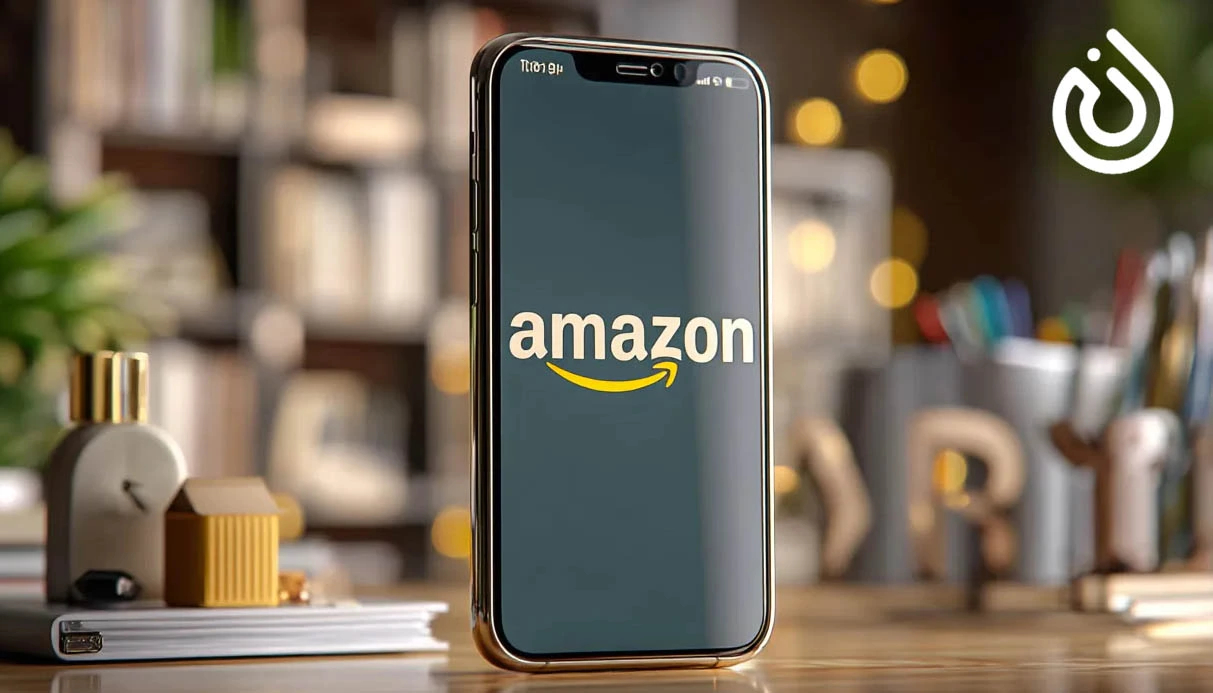.webp)

Learn how to create and manage an Amazon account while protecting your privacy. This practical, SEO-optimized guide explains legal options when you want to register without exposing a personal phone number, alternatives to phone-based verification, privacy best practices, and what to avoid to stay within Amazon’s Terms of Service.
Why users seek an Amazon account without a phone number
Many people want to shop on Amazon, monitor prices, or sell on Amazon, but they hesitate to share a personal phone number. Motivations include:
- Privacy concerns — avoiding targeted marketing or data linkage
- Security considerations — limiting phone-based harassment or SIM-targeted attacks
- Temporary usage — shoppers who need a one-time purchase or sellers setting up a business account
- Multi-account management — businesses or creators managing multiple accounts without exposing a personal line
This article walks through legal, ethical, and practical ways to register and use an Amazon account while minimizing phone exposure, and explains the trade-offs and risks you should know before you proceed.
Does Amazon require a phone number? The current reality
Amazon’s account creation flow varies by country and local regulations. In many regions, the basic registration asks for an email and a password; the phone number field is often presented as optional. However, Amazon may:
- Require a phone number when performing certain sensitive actions (e.g., password resets, payment verification, high-risk account activities)
- Request phone verification as a secondary security check (especially if suspicious activity is detected)
- Require phone numbers for seller accounts, for tax/KYC reasons, or when enabling two-step verification
Key point: In practice, while you can sometimes create an account without entering a phone number, you may later be asked for one to verify identity, recover access, or perform account actions. Preparing for that possibility is important.
Legally safe ways to create an Amazon account without giving your personal mobile number
Here are safe, compliant options to keep your personal phone private while using Amazon:
- Use only an email address at signup
- Amazon allows sign-up with an email and password in many regions. If the phone field is optional, skip it at registration.
- Make sure the email is secure — use a reputable provider, strong password, and unique credentials.
- Use a work or business phone (with permission)
If you have a company phone or business line, consider using it for account verification. This keeps your personal number private and is perfectly legal if you are authorized. - Use a carrier-provided secondary SIM or secondary number
Many mobile carriers offer additional lines or family plan numbers. A secondary line obtained legitimately can be used for verification while keeping your primary number private. - Use reputable, legal virtual phone services where permitted
Some countries allow legally registered virtual phone services (e.g., Google Voice in the U.S., certain VoIP business numbers). Use these only if they comply with Amazon’s policies and local laws. Be aware that Amazon may flag or disallow certain VoIP numbers for verification. - Important: Avoid recommending or using services that explicitly offer disposable or anonymized numbers meant to evade platform checks. Those may violate Amazon’s Terms of Service and could lead to account suspension.
- Use Amazon’s official 2-Step Verification options
If you want to minimize phone-based exposure, use app-based authenticators (e.g., authenticator apps that use TOTP) once Amazon supports them for your account. This reduces reliance on SMS for login security.
Step-by-step: Create an Amazon account with minimal phone exposure
Below is a clean, legal workflow you can follow. It assumes you want to avoid entering your personal mobile number during sign-up and remain compliant.
- Step 1 — Prepare a secure email
- Create or choose a strong, unique email address just for this account.
- Use an email provider with good security track record.
- Enable two-factor authentication on your email.
- Step 2 — Go to Amazon’s registration page
- Click “Create your Amazon account”.
- Enter your name, email, and a strong password.
- If the phone field is optional, leave it blank.
- Step 3 — Complete email verification
Amazon may send a confirmation code to your email. Enter that code to validate the address.
- Step 4 — Add payment and shipping (only when needed)
- Add a credit/debit card or a gift card to place orders. Payment verification can trigger additional identity checks.
- Use a business card or company address if you are protecting personal info — but ensure billing details match the card issuer’s records.
- Step 5 — Set up recovery options
Add alternative recovery methods (backup email, security questions if offered). These help prevent lockout without exposing a phone. - Step 6 — Enable account security
- Turn on Two-Step Verification (2SV). Where possible, use an authenticator app rather than SMS.
- Regularly review your account’s login activity in Amazon’s Security settings.
- Step 7 — If Amazon requests a phone number later
If prompted for a phone number (for verification or security), you can:
- Provide an authorized business number, or
- Use a legal secondary number you control (carrier second line or reputable virtual service), or
- Contact Amazon Support and explain privacy concerns — sometimes they can provide alternative verification paths.
Alternatives to a personal phone number (pros, cons, and legality)
Below are common alternatives people consider, summarized with their advantages and drawbacks.
- Secondary mobile number from your carrier
- Pros: Reliable SMS delivery; accepted by most services.
- Cons: Cost for additional line; linked to your identity via your carrier.
- Google Voice (U.S.) and similar provider-based virtual numbers
- Pros: Free or low-cost; works for many verifications; manageable dashboard.
- Cons: Only available in certain regions; Amazon may block some numbers; requires a Google account and setup.
- Business VoIP phone numbers (e.g., RingCentral, Grasshopper)
- Pros: Professional appearance; legal for business uses; persistent number.
- Cons: Monthly fees; possible verification checks from Amazon.
- Temporary/disposable phone number services
- Pros: Immediate availability.
- Cons: High risk: many platforms block these numbers; using them can violate Amazon’s Terms; not recommended.
- Family or trusted friend’s phone number
- Pros: Easy and usually accepted.
- Cons: Dependency on another person; potential privacy issues; recipient may receive recovery codes.
Bottom line: Prefer long-term, accountable solutions (carrier secondary line, reputable VoIP for business, or app-based 2FA). Avoid disposable or anonymous numbers that can lead to account suspension.
Privacy and security best practices for Amazon accounts
Protecting personal data and preventing account takeovers are critical. Follow these best practices:
Use strong, unique passwords
- Use a password manager to generate and store unique passwords.
- Rotate credentials if a breach is suspected.
Enable 2-Step Verification (2SV)
- Prefer an authenticator app (TOTP) or hardware token for the strongest protection.
- If you must use SMS, combine with other recovery methods.
Monitor account activity
- Regularly check Your Orders, Login & Security, and Payment options.
- Review devices under Manage Your Content and Devices and revoke unknown sessions.
Use secure payment methods
- Consider cards with virtual card numbers (some banks offer single-use numbers).
- Use Amazon gift cards for limited-exposure purchases.
Maintain up-to-date recovery options
- Keep a recovery email and at least one reliable phone/recovery method available in case account access is needed.
Beware phishing
- Amazon support will never ask for your full password via email. Verify sender addresses and use the Amazon website directly.
What not to do — and why it matters
Here are risky practices to avoid:
Don’t use disposable or anonymous numbers to evade verification
- Many disposable number services are flagged by Amazon and can lead to automatic verification failures or later account suspension.
Don’t buy accounts or account-creation services
- Buying accounts violates Amazon’s Terms of Service and exposes you to scams and loss.
Don’t share credentials or recovery codes
- Sharing passwords or verification codes opens you to fraud and potential loss of funds or data.
Don’t provide falsified personal information
- During seller verification or tax procedures, falsifying information is illegal and can lead to criminal exposure.
Violation of Amazon policies can lead to:
- Temporary holds or account suspension
- Lost funds or seller deactivation
- Identity verification demands that are harder to satisfy later
Conclusion and final recommendations
Creating and using an Amazon account while keeping your personal phone number private is possible if you follow legal and platform-compliant approaches. The safest options are using a secure email, enabling strong authentication (preferably app-based), and using legitimate secondary number solutions if a phone is required — such as a company line, a carrier-provided additional SIM, or reputable business VoIP services where allowed.
Avoid disposable or anonymous services that are intended specifically to bypass verification; those can lead to account restrictions or permanent suspension. If you must rely on an alternative phone solution, choose reputable services and document your ownership/control of that number in case Amazon requests verification.
Finally, if privacy is your top priority, consider using virtual number services that operate within the law and Amazon’s policies as part of a layered privacy strategy — but only after confirming they’re permitted for account verification in your region and keeping in mind potential platform restrictions. Prioritize account security (strong password + 2SV) and keep recovery options current so you don’t risk lockout.
.jpg)
.webp)

